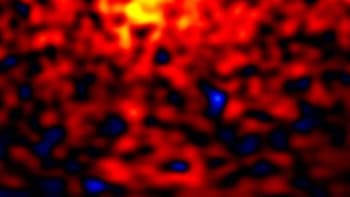Most cosmologists agree that less than a tenth of the universe is made up of normal - or 'baryonic' - matter, mainly neutrons and protons. They believe that the remaining 90%-plus consists of 'dark matter' - fundamental particles which we have not yet detected - and, possibly, an even more mysterious substance that is often called quintessence. However, Stacy McGaugh, an astronomer at the University of Maryland in the US, has challenged this view in a paper published this week (S S McGaugh 2000 Astrophysical Journal Letters 541 L33).

During the rapid expansion of the universe after the big bang, the ‘outward’ kinetic energy of the explosion fought against the ‘inward’ gravitational pull of matter. The evolution of the universe is therefore directly linked to the amount of mass (or equivalently energy) it contains. The idea of dark matter was proposed to explain why some galaxies seemed to be rotating faster than could be explained by the amount of visible matter they contained.
Two years ago, the Boomerang experiment photographed with unprecedented accuracy fluctuations in the temperature of the microwave background – the radiation left over from the big bang – in a patch of sky at the South pole. As expected, the results revealed a peak consistent with a ‘flat’ universe that has just enough energy to continue expanding forever. As expected the Boomerang team also detected a second peak, but it was considerably smaller than predicted. A possible explanation of this finding is that there might be twice as much baryonic material in the universe as has been detected so far, and that it could be hidden inside galaxies.
However, McGaugh offers a different interpretation of the Boomerang results, proposing that the small second peak is evidence for a purely baryonic universe with no dark matter. He argues that many of the adjustments that have been made to cosmological models to account for the small second peak contravene other crucial constraints. McGaugh is a supporter of modified Newtonian dynamics (MOND) which, he claims, has had considerable success in predicting the dynamics of a wide variety of cosmological objects.
However, Paolo de Bernardis of the University of Rome La Sapienza and a spokesperson for the Boomerang experiments is cautious. He believes that the “low” second peak found by Boomerang is “perfectly compatible with standard big bang nucleosynthesis in a universe with cold dark matter and baryons”. But he adds that both dark matter and the MOND model “should be directly experimentally proven before we believe either of them. It is simply too early to decide.”



